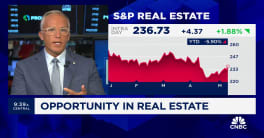Fannie Mae has lowered its third quarter projections for GDP growth by 0.2 percent to an annualized 2.4 percent based on its assessment of the overall impacts of the recent hurricanes. The company's Economic and Strategic Research (ESR) Group says the storms appeared to have slowed consumer spending growth and dragged modestly on consumer and business confidence. They also disrupted home sales, a sector already suffering from tight inventory. The overall economic impacts of the storms are expected to be short-lived so the fourth quarter estimates have been revised up slightly to reflect a rebound in activity and the start of rebuilding efforts. Their GDP growth forecast for all of 2017 remains at 2.2 percent.
The ESR is not quite as optimistic about next year. They expect a boost from hurricane rebuilding, but have cut their projections for economic growth to 1.8 percent. Any modest upside risk to growth from possible tax cuts will be offset by restrictive trade policies and geopolitical concerns. They also see a downside risk from monetary policy. The announcement last month that the Fed will begin to taper its balance sheet had little immediate impact on interest rates or mortgage spreads however the long-term effects of balance sheet reduction and increases in the fed funds rate are uncertain and could lead to rate volatility.
While the hurricanes' effects on the overall economy may end up as a blip, they may exacerbate the slowing of the housing market. Harvey already impacted home sales in August and Irma is expected to lead to an additional pullback in September. Existing home sales fell in August for the third straight time and hit a 12-month low, with sales especially hard hit in the South and the West. Despite slowing sales, the number of homes on the market also dropped for the 27th consecutive time when compared to a year earlier, this time by 6.5 percent. Fannie's economists say supply seems to be the problem, not demand, as homes are selling fast; continuing to average 30 or fewer days on the market. New home sales also dipped to a new 2017 low in August. While Hurricane Harvey likely drove the decline in sales in the South, they were also down in the Northeast and the West.
Pending home sales don't bode well for improvement, they decreased in August for the fifth time in six months to a 20-month low and were down year-over-year for the fourth time in five months. Contract signings declined in the South, but were down most sharply in the Northeast, suggesting that Harvey was not the only factor restraining activity.
Another leading indicator, purchase mortgage applications, had their second consecutive loss in August, despite falling mortgage rates. However, purchase demand rebounded slightly in September. Refinance applications have fared better than the purchase segment, rising in September for the second consecutive month and the fourth time in five months.
Fannie's economists have downgraded their home sales forecast, now looking for total home sales to be flat in 2017 versus a 3.3 percent rise in the prior forecast.
August's homebuilding activity did not appear affected by Harvey. Multifamily starts were down, but single-family starts, helped by gains in the West and South, posted a modest rise. The hurricanes are anticipated to show up in September construction data. Counties designed as Individual Assistance counties by the Federal Emergency Management Agency (FEMA) in Texas and Florida together accounted for about 13 percent of single-family permits in the United States and 26 percent of permits in the South in 2016. It is unusual for homes to be rebuilt from the ground up following a hurricane, and repairs of existing structures are not counted as housing starts, but will be included in the home improvement component of residential investment. Furthermore, structural repairs in the hurricane disaster areas will likely face significant delays, given ongoing shortages of skilled labor and material such as lumber, whose prices have risen sharply this year.
The ESR still expects a 30-year fixed-rate mortgage to average 3.9 percent in the fourth quarter of this year.
As in every October, estimates of single-family (1-4-unit properties) mortgage originations for the prior year are updated based on annual benchmarking to the newly released Home Mortgage Disclosure Act (HMDA) data. The company has lowered its estimated purchase originations by $9 billion, largely because of the hurricanes. However, they have revised their estimate of refinance origination by $9 billion, thus keeping their 2016 total mortgage originations estimate unchanged at $2.05 trillion. As a result of the benchmarking, the 2016 refinance share edged up one percentage point from the prior estimate to 49 percent. The projected mortgage originations for 2017 were upgraded by $109 billion, with refinance originations accounting for the majority of the increase.
For all of 2017, total mortgage originations are expected to decline approximately 13 percent from 2016 to $1.79 trillion, with a 12-percentage point drop in the refinance share to 37 percent. Mortgage originations are projected to fall further by about four percent to $1.72 trillion in 2018, as a decline in refinance originations outweighs an increase in purchase originations, leading to an expected further drop in refinance share to 31 percent.







